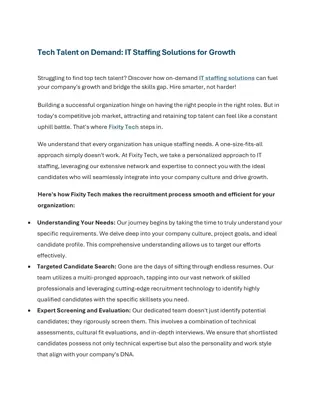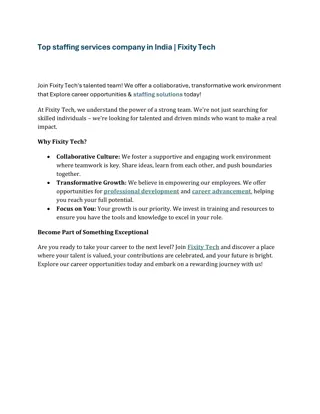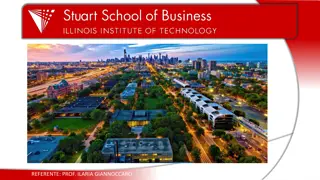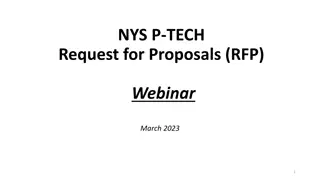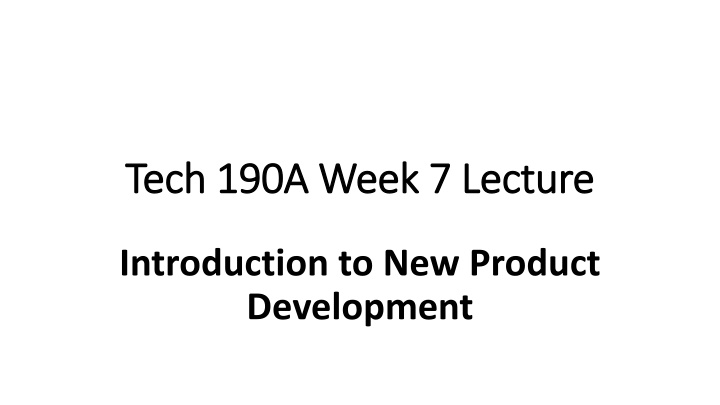
New Product Development Process Explained with Senior Project Guidelines
Explore the step-by-step process of developing a new product through the lens of a Senior Project, covering aspects such as project proposal approval, product design, assembly drawings, prototyping, process planning, and more.
Download Presentation

Please find below an Image/Link to download the presentation.
The content on the website is provided AS IS for your information and personal use only. It may not be sold, licensed, or shared on other websites without obtaining consent from the author. If you encounter any issues during the download, it is possible that the publisher has removed the file from their server.
You are allowed to download the files provided on this website for personal or commercial use, subject to the condition that they are used lawfully. All files are the property of their respective owners.
The content on the website is provided AS IS for your information and personal use only. It may not be sold, licensed, or shared on other websites without obtaining consent from the author.
E N D
Presentation Transcript
Tech 190A Week 7 Lecture Tech 190A Week 7 Lecture Introduction to New Product Development
The Senior Project New Product Development Handout 1. Procedure 2. Project Proposal Approval Form (20) 3. Product Design (50) 4. Assembly Drawings (10 Points) 5. Prototyped Model (10 Points) 6. Process Planning (10 Points) 7. Log of Group s Meetings (10 Points) 8. Compliance with Schedule (10 Points) 9. Report (10 Points) 10.Oral Presentation (20 Points) 11.Portfolio Content Organization and Submission (10 Points)
Definitions Product 1. Make up (the project should have mechanical and electronic/electrical components) 2. Drawing types 3. Assembly drawings 4. Purpose 5. Uses
Definitions Parts Definitions Drawings Purpose Make up
Definitions Assembly drawings Definitions Samples (see attached sample) Multisim tutorial is at: http://www.ece.mtu.edu/labs/EElabs/EE3010/revisions/Summer2009/ Multisim%20Tutorial/MULTISIM%20Tutorial.pdf Must be labeled Compared to bill of materials (BOM) Purpose Uses
Definitions (Assembly Drawing) Definitions (Assembly Drawing)
Definitions (Assembly Drawing) Definitions (Assembly Drawing)
Definitions (Assembly Drawing) Definitions (Assembly Drawing)
Definitions (Process Plan) Definitions (Process Plan) Process Planning Components Parts Products Process
Definitions (Survey Results) Definitions (Survey Results)
Definitions Definitions (Survey Results) (Survey Results)
Procedure: Procedure: Form teams Determine product Design survey instrument Administer survey Analyze data Interpret results Develop imagery and personas Map out high points Map out pain points Design product Create prototypes Design process Design system
Chapter1: A Brief Introduction to Design thinking Chapter1: A Brief Introduction to Design thinking Design thinking is a systematic and collaborative approach for identifying and creatively solving problems It Includes two major phases: Identifying problems Discover Define Solving problems Create Evaluate Design thinking as a nonlinear process
Chapter 2: Inspirational Design Briefing Chapter 2: Inspirational Design Briefing A design brief Is a short document that relays issues of who, what, when, how, and why to the design team It is a written explanation of the aims and objectives of a project It represents the desired outcome of the project It relays management s request to design teams
Nine Criteria of an Inspirational Design Brief 1. Philosophy 2. Structure 3. Innovation 4. Social/human 5. Environment 6. Viability 7. Process 8. Function 9. Expression
Chapter 10: Design Thinking for Non Chapter 10: Design Thinking for Non- -Designers: A Guide for Team Training and Implementation for Team Training and Implementation Designers: A Guide Many companies are implementing design thinking into their operations Many of these team members have no design experience Use of design thinking tools is dynamic and requires adaptation over time Teams need to decide which tool to use for the good of every team member Three team strategies for success: 1. Encourage Dual-mode debate 2. Manage design thinking transitions 3. Adapt tools under changing membership




